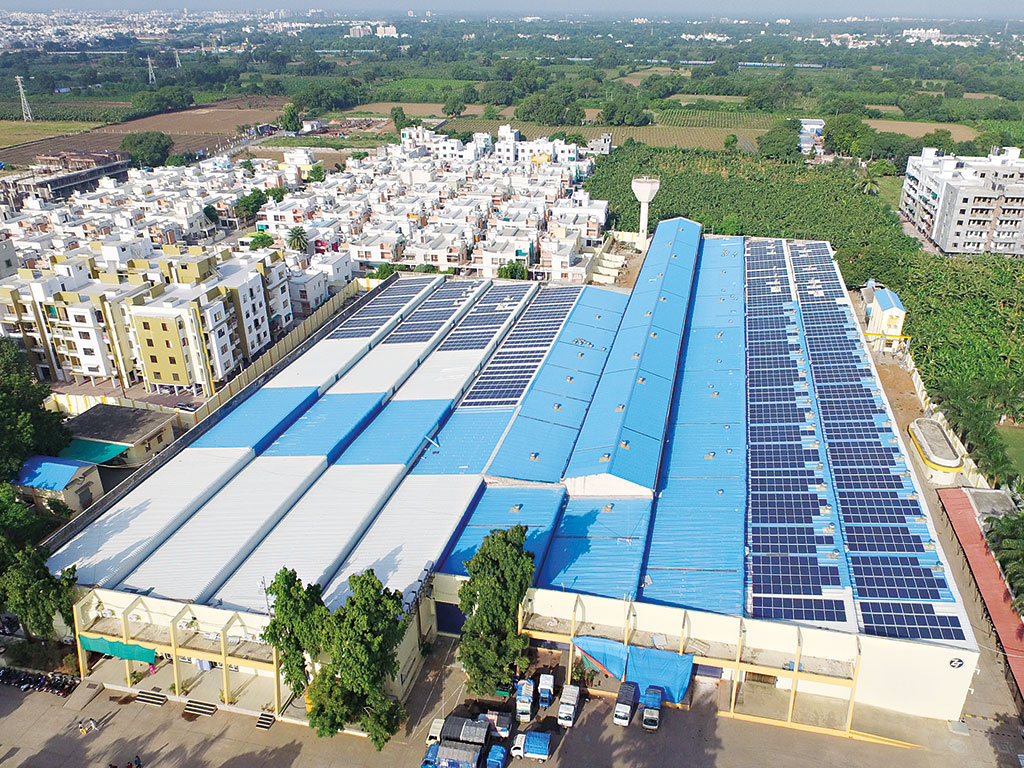Madhav’s solar solutions allow deprived areas to convert to renewable sources
India’s sizeable off-grid population is reliant on fossil fuels. By bringing solar power to industrial operators, Madhav aims to cause a trickle-down effect, helping households go green

Madhav's solar panel systems can power individual dwellings and huge factories alike
The Indian solar PV market has exploded in recent years, fuelled by the country’s insatiable need for energy. By 2035, India’s energy demands will make it the world’s second-largest consumer of energy, responsible for an 18 percent share of global energy consumption. Of India’s total 1.2 billion population, about 70 live in rural locations. This fact alone creates significant opportunity for off-grid projects, and puts the enormous potential of solar energy in figures.
Green dream
India is on a focused mission to go green. It aspires to have the world’s largest solar PV portfolio by 2022. As Prime Minister Narendra Modi put it at the COP21 climate conference in Paris: “As the developing world lifts billions of people into prosperity, our hope for a sustainable planet rests on a bold, global initiative.”
MI Solar is based in Vadodara, Gujarat. The company is on a mission to create a self-sustainable enterprise in the solar PV sector. The challenges of this complex industry do not deter MI Solar. We have a laser-sharp focus on our business objectives. Instead of chasing every shiny object, we only go after sustainability. For us, the word ‘sustainable’ carries utmost importance in business. This ideology has developed through our association with Madhav, the parent company of MI Solar.
In business, it is easy to slip into chasing multiple projects. However, financially, it often makes more sense to devote one’s energy to an obscure project that brings consistent returns. Madhav has done extensive work in India’s core infrastructure sector. The company’s portfolio ranges from public-private partnerships to engineering procurement construction projects. Successful execution of their projects comes through years of experience in the construction sector. A move into the solar PV sector came as a natural progression for the group’s solar arm: MI Solar.
A sizable portion of India’s population is not connected to the mainstream grid, and very few of these people can afford a private electric supply
India’s Solar PV market is diverse and complex. Also, the sector features immense competition. Domestic and international investors are increasingly attracted to this lucrative area, which is a positive for the country, but makes individual excellence more difficult to achieve.
Indeed, caution is essential for anyone who wants to invest in the industry, as it does have pitfalls and downsides along with opportunities. The large-scale independent power producer subsector is large, yet competitive. Some investors have taken up large portions of investment in it, and it is notable that the few who have scaled up have done so due to their lone ability to execute projects.
Rising to the challenge
The Indian solar PV market has shown signs of having a bright future ahead of it. With the end goal of an evenly distributed power generation market, the federal and state governments are bringing in policy changes to bridge gaps.
On the infrastructure side, MI Solar is proud to have built large-scale plants in diverse locations across India. The highest standards of quality and adherence to completion timelines are the defining features of these projects, and the secret to their success. MI Solar even goes one step further, by acquiring the land for plant locations. This works to ensure seamless project execution, as the land use permissions are frequently a cause of major bottlenecks when executing projects. MI Solar understands the Indian construction sector and the sectors associated with it. Thus, they are able to adapt and brace themselves to changing winds in the market. The same is true of the company’s knowledge of metering policies, which differ from state to state. A strong understanding of these allows MI Solar to tailor its approach for each location, maximising the bottom line.
Power to the people
A sizable portion of India’s population is not connected to the mainstream grid, and very few of these people can afford a private electric supply by the way of a diesel-powered generator (the primary alternative).
Indeed, such a setup is both costly and inconvenient. Diesel, being a fossil fuel derivative, is a scarce resource, so is expensive. Diesel-fuelled power generators cause a lot of noise and produce a lot of smoke, which is both socially disruptive and detrimental to the environment.
To deal with this problem, MI Solar is working with industries that are diesel-dependent. This includes the mining and stone crushing industries. Due to the nature of their business, such industries are predominantly located in far-flung regions, which only adds to the difficulties they face in doing business. MI Solar has taken up the challenge to bring relief to these sectors. The first step is to remove dependence on rudimentary means of power.
A hybrid generator model, with both diesel and solar PV integration, works best in this case. Operations can run on direct solar energy, with a storage backup in place. Machines can work on stored energy, with diesel models still plugged in. This setup ensures consistent uptime and a significant reduction in costs, fumes, and dependence on fossil fuels. The successful execution of this project will have huge implications for India. Once its industrial use is established, the same generator model can be extended to the rural population for domestic use. In essence, the more industrial projects that adopt this system, the more likely it is for the technology to benefit individual households as well.
Due to the absence of crowdfunding setups in this sector, however, the path to economies of scale for micro-setups seems limited. This could slow down many ambitious plans for rural improvement. If only a platform in the vein of Kickstarter and Indiegogo existed for hybrid power solutions in India, then in a single push the world would achieve the goal of a sustainable planet.













